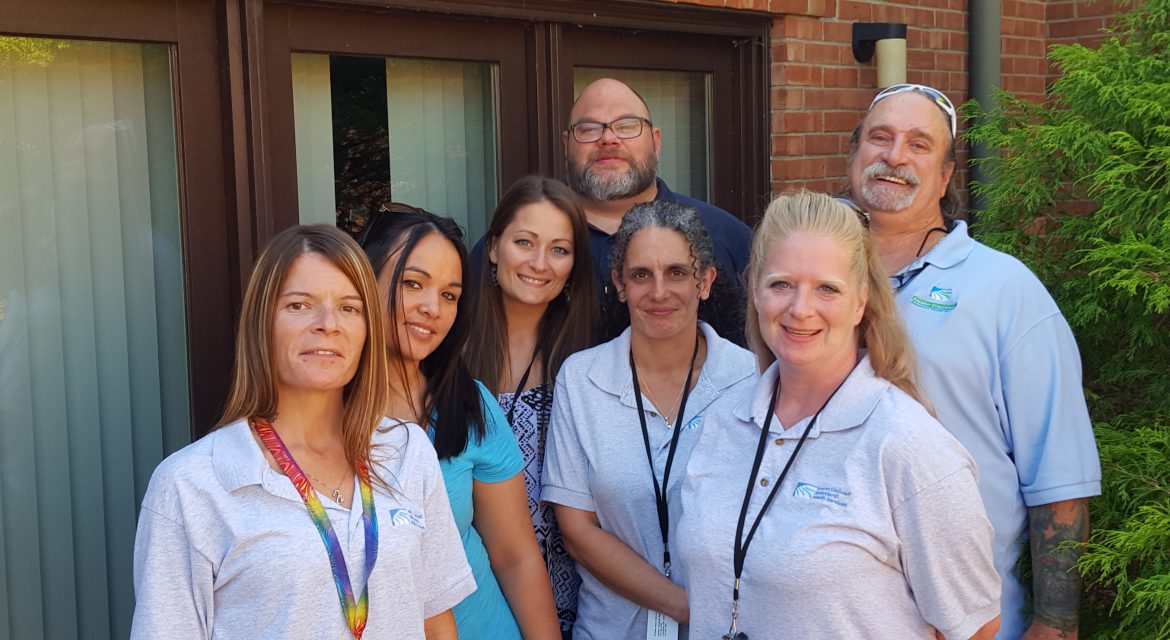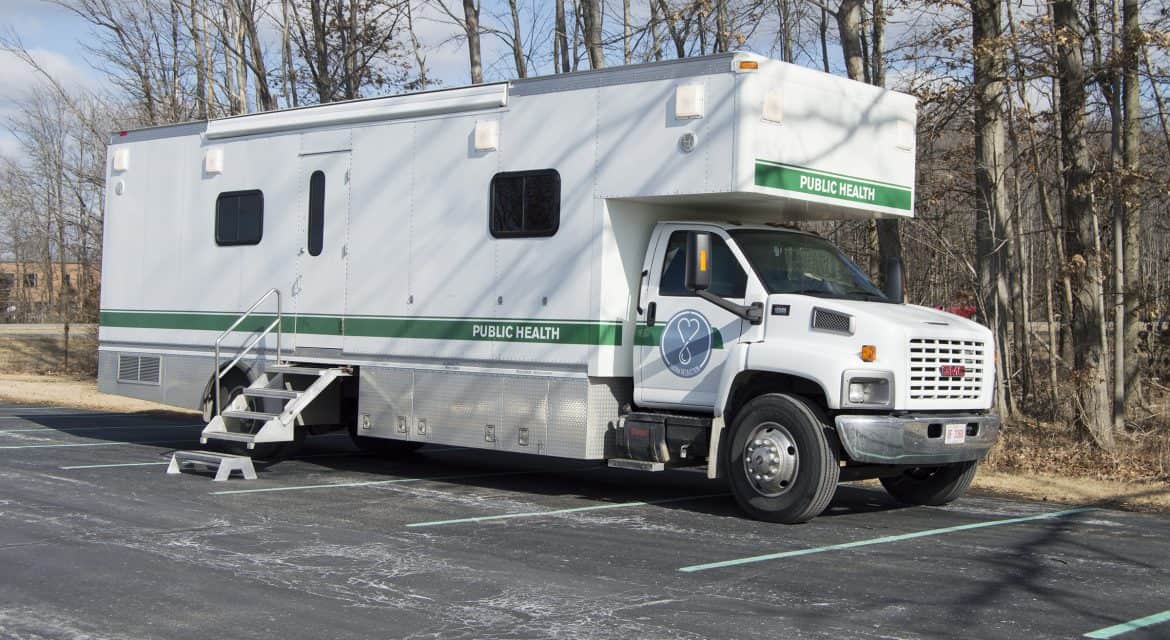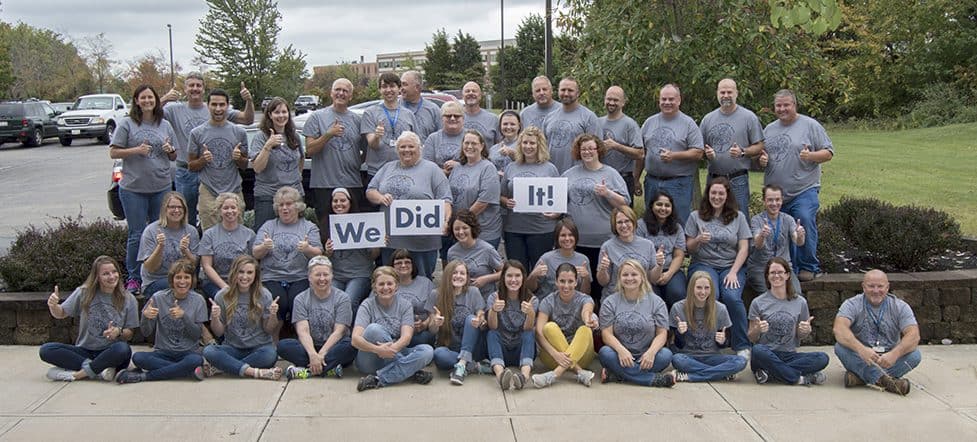Submitted by Clermont County Public Health
Where can you get vaccinated?
Under Ohio’s vaccine plan, older adults can receive the vaccine according to the following schedule.
January 18 – Ohioans 80 years of age and older
January 25 – ages 75 and older and those with severe congenital or developmental disabilities
February 1 – ages 70 and older
February 8 – ages 65 and older.
Clermont County has several vaccine providers in the county where you can make an appointment.
HealthSource of Ohio
register online at www.healthsourceofohio.org
or call 513-732-5081
Kroger pharmacy
register online at www.kroger.com/ohiocovidvaccine
or call 866-211-5320
Meijer pharmacy
to register, text COVID to 75049 or visit https://clinic.meijer.com/
or call the pharmacy directly for assistance registering
Miami Township Meijer – 513-576-5510
Eastgate Meijer – 513-943-5710
Mercy Health – Clermont Hospital
call 1-866-624-0366 to schedule an appointment
Clermont County Public Health
to get on the waiting list and be contacted when an appointment is available, visit: https://ccphohio.org/covid-19-vaccine-info/ For assistance signing up for the waiting list or questions about COVID-19, call the Clermont County COVID-19 hotline at 513-735-8500.

Submitted by Clermont County Public Health
When will Clermont County get the COVID-19 vaccine?
With a COVID-19 vaccine here, many people want to know when they can get vaccinated. There are still some questions to be answered, but here’s what we know.
Ohio will receive its first shipment of about 98,000 doses on Dec. 15. Of those doses, about 10,000 will go to 10 different hospitals statewide for healthcare workers who treat COVID-19 patients. The remaining doses will be used for congregate living facilities (long-term care, nursing homes and assisted living facilities).
On Dec. 22, Ohio will receive a total of about 324,000 doses. Those will be distributed to 98 hospitals, 108 local health departments (including Clermont County Public Health) and major retail pharmacies. The pharmacies will vaccinate staff and residents of congregate care facilities. Hospitals will vaccinate their workers who are exposed to COVID patients. The 108 local health departments will distribute their portion of the vaccine to local front-line health care workers and fire/EMS personnel.
An additional 237,000 doses are expected to arrive in Ohio during the final week of December.
Who gets the top priority?
During the initial phase the top priority will go to those people that fall under one of these categories:
Who determines the priority groups for receiving vaccine?
The Advisory Committee on Immunization Practices (ACIP) makes recommendations to the Centers for Disease Control on which populations group should receive the vaccine. The ACIP will determine which population group will be the next priority after everyone in the priority 1A group receives the vaccine.
When can I get the vaccine?
As more vaccine is produced more groups of people will be prioritized. However, it may be the middle of 2021 before the vaccine will be widely available to the community.
Submitted by Clermont County Public Health
Clermont County, along with the rest of Ohio, has seen a significant increase in the number of new cases of COVID-19 over the last few weeks. Although the county remains in the “orange” under the public health advisory system as of Oct. 22, it is now classified as a high incidence county. A high incidence county is defined by the Ohio Department of Health as a county that has had more than 100 cases per 100,000 residents within the past two weeks.
For comparison, on Oct. 1, Clermont County had a rate of 62 new cases per 100,000 people. As of Oct. 22, the rate was 182 new cases per 100,000.
In addition to an increase in cases, we are also seeing a large increase in the number of close contacts for each confirmed case – or infected person. That means people are getting together with more people than they were in the spring or early summer, when the virus was spreading at a slower rate. We are also seeing fewer people wearing masks.
Without a vaccine, our best chance of slowing the spread of this virus and preventing our hospitals from being overwhelmed is to continue to practice the prevention measures that have been in place.
 With the holidays just around the corner, it is important to consider our everyday interactions with other people and how many people are in our social circles, or how many people we interact with.
With the holidays just around the corner, it is important to consider our everyday interactions with other people and how many people are in our social circles, or how many people we interact with.
While your social bubble may consist only of your immediate family members and a few co-workers, you must also consider how big the bubble is of your family members. If each member of your family each has their own bubble outside of your family – school, work, sports teams, friends, etc. the potential risk of getting and spreading COVID-19 also increases.
The more interactions you have with other people, and the longer those interactions are, the higher your potential risk is of getting COVID-19.
As we head into flu season, it is more important than ever to do our best to minimize the spread of this virus. It is imperative that we all take responsibility to do our part to minimize the spread of this virus.
What can you do?
For more information on COVID-19 in Clermont County, visit https://ccphohio.org/covid-19/
BATAVIA, Ohio (Feb. 6, 2019) – All Clermont County courts and many county offices will be closed Friday, Feb. 8, to allow employees to attend, view or participate in services for Sheriff’s Detective Bill Brewer, who lost his life in the line of duty on Feb. 2.
CLOSED
Sheriff’s Office: Administrative offices close at noon Thursday and all day Friday.
Common Pleas Court: Closes at 2 p.m. Thursday and all day Friday. This also includes Probation, Law Library, and Court Services.
Juvenile Court/Probate Court: Closes at 2 p.m. Thursday and all day Friday.
Prosecutor’s Office: Closes at 2 p.m. Thursday and all day Friday.
Domestic Relations Court: Closes at 2 p.m. Thursday and all day Friday. All hearings will be scheduled to the next available time.
Board of County Commissioners’ office, and departments including Water Resources Administration Building, Building Inspection, Permit Central, Job & Family Services, OhioMeansJobs/Clermont County, and Department of Community & Economic Development: Closed Friday.
Municipal Court: Closed Friday. Those who have an arraignment scheduled for Friday will be sent a new court date. They can also check the Clermontclerk.org website for updated information.
Common Pleas Clerk’s Office, Domestic Relations Clerk and all auto title offices: Closed Friday.
Public Defender’s Office: Closed Friday.
Auditor’s Office: Closed Friday.
Recorder’s Office: Closed Friday.
Engineer’s Office: Closed Friday.
Public Health: Closed Friday.
Coroner’s Office: Closed Friday; on call at 513.543.0129.
OPEN
Some county offices will be open, including the Treasurer’s Office, which is accepting payments for first-half property taxes, which are due Feb. 13. The Municipal Clerk of Court Office will be open Friday. The Board of Elections office will be open Friday.
Bus service in Clermont County, including Dial-A-Ride, will operate normally.
The county website, www.clermontcountyohio.gov, has separate pages for each county office, including how to contact them. Check there if you have questions on whether an office is open or closed.
Services for Detective Brewer are as follows:
Family and friends are invited to a public visitation from 4-8 p.m., Thursday, Feb. 7, at Mount Carmel Christian Church, 4110 Bach Buxton Rd, Batavia, OH 45103, under the direction of E.C. Nurre Funeral Home in Amelia. Funeral services will be held at 11 a.m. Friday at the church. Interment will follow at Pierce Township Cemetery.
BATAVIA, Ohio – Clermont County is experiencing an increase in cases of hepatitis A. The Ohio Department of Health declared a statewide outbreak of the illness in June. To date, there have been 225 cases reported in Ohio.
Hepatitis A is a virus that affects the liver. It can be spread from person to person, or by eating or drinking food that is contaminated with the virus. Food can become contaminated with the virus when a person doesn’t wash their hands after using the bathroom and then prepares or touches food. Spread of the illness in the current outbreak is primarily occurring from person to person in high-risk groups.
People at higher risk for getting sick from Hepatitis A during this outbreak include:
Symptoms of hepatitis A include fatigue, low appetite, stomach pain, nausea, clay-colored stools, and jaundice (yellowish color to the skin and eyes).
“We are working with at-risk populations to help prevent even more people from getting sick,” said Health Commissioner Julianne Nesbit.“Whether you are considered to be at high risk or not, anyone can get hepatitis A. So we encourage everyone to get vaccinated and wash your hands.”
For more information on the statewide outbreak of hepatitis A, visit the Ohio Department of Health’s website here.
For more information on hepatitis A from the Centers for Disease Control, click here.
Clermont County Public Health (CCPH) is dedicated to the mission of striving to improve Clermont County by preventing disease, promoting health, and protecting the environment. For more information, visit http://www.ccphohio.org.

BATAVIA, Ohio (May 11, 2018) – Deaths due to drug overdoses declined for the second straight year in Clermont County, according to the Clermont County Coroner’s Office.
In 2017, the Coroner’s Office, under the direction of Dr. Brian Treon, ruled that 76 deaths were caused by accidental drug overdoses. This compared to 83 in 2016, and 94 in 2015 – the highest number since Clermont County began to see the effects of increased opioid use in the late 2000s.
“We are encouraged by these numbers,” said Karen Scherra, the director of the Clermont County Mental Health & Recovery Board (MHRB). “These numbers indicate that the comprehensive measures we as a county have taken to address this issue are working.” The MHRB, the county hub in the fight against opioid addiction, is the lead organization in Clermont County’s Opiate Task Force, a collaborative that began in 2013 to address the opioid crisis in the county.
In 2017, more medication-assisted treatment and other kinds of treatment became available to more people suffering from substance abuse disorder, Scherra said. In 2017, MHRB spent over $1.9 million on addiction treatment services.
Other advances in 2017 included more Quick Response Teams, which go to the homes of those who have survived overdoses to connect them to recovery resources; and more police/fire/EMS departments carrying Narcan, which can reverse overdoses.
In addition, a long-term recovery home for men was opened in 2017 in Clermont County. MHRB is now working on funding to open a similar home for women. Clermont County also opened a women’s wing in the Community Alternative Sentencing Center. This jail alternative connects clients with multiple treatment options.
Funding for these initiatives are provided through a combination of MHRB levy funds, federal and state grants.
Clermont County Public Health, a member of the Opiate Task Force, is also on the forefront of the opioid battle. “In response to the rise in drug overdose deaths, we created an Overdose Death Review Committee in 2014,” said Public Health Commissioner Julianne Nesbit. “We look at aggregate level data to see if there are any trends that we can address to help reduce future deaths in the community.
“Since we first saw the increase in drug overdose deaths, we have had a full-time Injury Prevention Coordinator who works to educate the community and work with our partners on the drug epidemic.”
In March, Hamilton County reported that overdose deaths for 2017 had increased 31 percent over the previous year to 529. Butler County reported a 20% increase to 232.
More information on Clermont County’s Opiate Task Force can be found on its website, www.getcleannowClermont.org.
For more information, contact MHRB Executive Director Karen Scherra, kscherra@ccmhrb.org, 513.732.5407.
#########

(CINCINNATI; February 27, 2018) – Mercy Health – Cincinnati, which provides advanced, quality, compassionate care in your neighborhood through its care network, announces that Clermont Hospital is partnering with Clermont County Public Health and Hamilton County Public Health to offer a free syringe services program starting March 1.
The Exchange Project van, which is operated by Hamilton County Public Health, will visit the Clermont Hospital campus every Thursday from 10 a.m.–1 p.m. The hospital is located at 3000 Hospital Drive, Batavia, Ohio 45103.
In addition to providing access to sterile syringes, the program also offers testing and referral to treatment for HIV and Hepatitis C, education on prevention of infection and an access point to substance use disorder counseling and treatment programs. The program also provides naloxone, also known as Narcan, an opiate overdose reversal medication.
“A syringe services program is one more tool that we can use in the fight against opioid addiction. By providing resources such as referral to treatment and testing for HIV and hepatitis C, we can address other issues that accompany drug addiction,” said Julianne Nesbit, Clermont County Health Commissioner. “We are very fortunate to have a good partnership in place with Hamilton County Public Health and Mercy Health – Clermont Hospital to offer this valuable service.”
The needle exchange program, also known as a blood-borne infectious disease prevention program, is part of a wider comprehensive public health/harm reduction program.
“By providing access to sterile syringes to people who inject drugs, we can help reduce the spread of communicable diseases, such as hepatitis and HIV. Reported cases of hepatitis C, an infectious disease that can quickly transmit through injection drug use, increased by 40 percent in the last five years in Clermont County. During the same time period, the number of people living with HIV in Clermont County increased by 27%,” said Stephen Feagins, MD, Vice President of Medical Affairs for Mercy Health’s East market. “Harm reduction efforts, such as syringe service programs, have been shown to have a positive impact in these areas.”
Approximately one in three people ages 18-30 who inject drugs has hepatitis C and hepatitis C kills more Americans than any other infectious disease. For those who live with the disease, the medication cost alone to treat one case of hepatitis C is $84,000. The lifetime cost of treating one person living with HIV is $400,000. By contrast, the estimated cost of the Clermont County’s needle exchange program is $42,000 annually, with Mercy Health Foundation and Clermont County Public Health funding the program.
Other benefits of a syringe services program include:
For more information about Clermont County Public Health’s syringe services program, visit http://www.clermonthealthdistrict.org/syringeservices.aspx. For more information on The Exchange Project, visit https://www.facebook.com/hc.xchange/.
BATAVIA, Ohio (Feb. 22, 2018) — The Clermont County Board of Health has closed the pool and spa at the Ameristay Inn and Suites at 2188 Winemiller Road in Batavia. The decision was made at the Feb. 14 monthly Board of Health meeting. The decision to revoke the license and close the pool was based on a pattern of code violations, and the failure by the hotel staff to comply with the Ohio Public Swimming Pool, Spa and Special Use Pool rules and regulations.
“We have been working with the operator of the pool and hotel, Mr. Raaj Patel since October to bring the pool into compliance with ongoing unresolved and continued violations,” said Health Commissioner Julianne Nesbit. “Unfortunately, Mr. Patel’s continued failure to comply with Ohio law regarding public swimming pools has forced us to close the pool to prevent anyone from getting sick or injured.”
“The hotel does not currently have any staff members that are familiar with the basic operations of a public swimming pool and spa,” said Nesbit. “Until Mr. Patel, can show that the pool and spa can be properly maintained with correct water chemistry, the pool will remain closed.” The spa was already closed due to mechanical issues.
All public swimming pools and spas in Ohio are required to be licensed by their local health department, and provide a daily log showing that the water chemistry of the pool is maintained within proper levels by a knowledgeable staff person.
Clermont County Public Health inspects 162 public swimming pools located in the county, and all inspection reports can be found on their website at www.ccphohio.org.
# # #
Clermont County Public Health (CCPH) is dedicated to the mission of striving to improve Clermont County by preventing disease, promoting health, and protecting the environment. For more information, visit http://www.ccphohio.org or call 513.732.7499.

BATAVIA, Ohio (NOv. 27, 2017) – Clermont County Public Health has achieved national accreditation through the Public Health Accreditation Board (PHAB). The accreditation program works to improve the quality and performance of the nation’s public health departments.
The national accreditation program is supported by the Centers for Disease Control and Prevention and the Robert Wood Johnson Foundation. To become accredited, an agency must show that they meet or exceed a set of standards, by going through a self-assessment, and a peer review.
“This has been a long process that we began in 2011, but our staff has worked very hard to finally achieve our goal,” said Health Commissioner Julianne Nesbit. “The process was very rigorous, and required us to submit more than 470 documents to be reviewed.”
During the process, Clermont County Public Health conducted a Community Health Assessment and created a Community Health Improvement Plan and a strategic plan to help identify the biggest health threats to the community and help guide the direction of the agency in the future.
The Ohio Department of Health has required all 117 local health departments in Ohio be accredited by 2020. With this announcement, Clermont County Public Health becomes only the 18th local health department in Ohio to earn the distinction.
“Throughout the process we were able to analyze our programs and services and improve in many areas, which will benefit the citizens of Clermont County,” said Nesbit. Accreditation is an on-going process, and once the distinction is earned, it lasts for five years, then the health department will need to re-apply and begin the process again.
######
Clermont County Public Health (CCPH) is dedicated to the mission of striving to improve Clermont County by preventing disease, promoting health, and protecting the environment. For more information, visit http://www.ccphohio.org or call 513-732-7499.

BATAVIA, Ohio (Nov. 14, 2017) – Clermont County Public Health is seeking residents’ input on a proposed Syringe Services Program. A public forum will be held 6:30-8 p.m. Thursday, Nov. 30, at the Clermont County Engineer’s Office at 2381 Clermont Center Drive in Batavia. Public comments will also be accepted through an online survey.
Syringe Services Programs (SSPs) are public health programs that are intended to reduce the spread of infectious diseases such as hepatitis and HIV. The SSPs provide access to sterile syringes to people who inject drugs. The program can also make referrals to substance use disorder counseling and treatment programs. They also provide education on the prevention of infection and offer testing and referral for treatment for hepatitis C and HIV.
The proposed program in Clermont County would be a collaborative effort between Clermont County Public Health, Mercy Health – Clermont Hospital, Hamilton County Public Health, and the Exchange Project. A mobile van would come to the hospital parking lot one half-day each week to provide the services.
In Clermont County, the rate of hepatitis C infections have risen by 40 percent, and HIV rates have risen by 27 percent over the last five years. Clermont County ranks fourth in Ohio in drug overdose deaths.
“The Syringe Services Program would be a needed resource in Clermont County,” said Health Commissioner Julianne Nesbit. “The goal of the program is to lower rates of hepatitis C and HIV, while also providing access to treatment to people with substance use disorder.”
According to the Centers for Disease Control, people who inject drugs are five times as likely to enter treatment for substance abuse disorder and are more likely to reduce or stop injecting when they use a Syringe Services Program.
For more information on the Syringe Services Program, or to complete the community survey, visit www.ccphohio.org.
# # #
Clermont County Public Health (CCPH) is dedicated to the mission of striving to improve Clermont County by preventing disease, promoting health, and protecting the environment. For more information, visit www.ccphohio.org or call 513.732.7499.